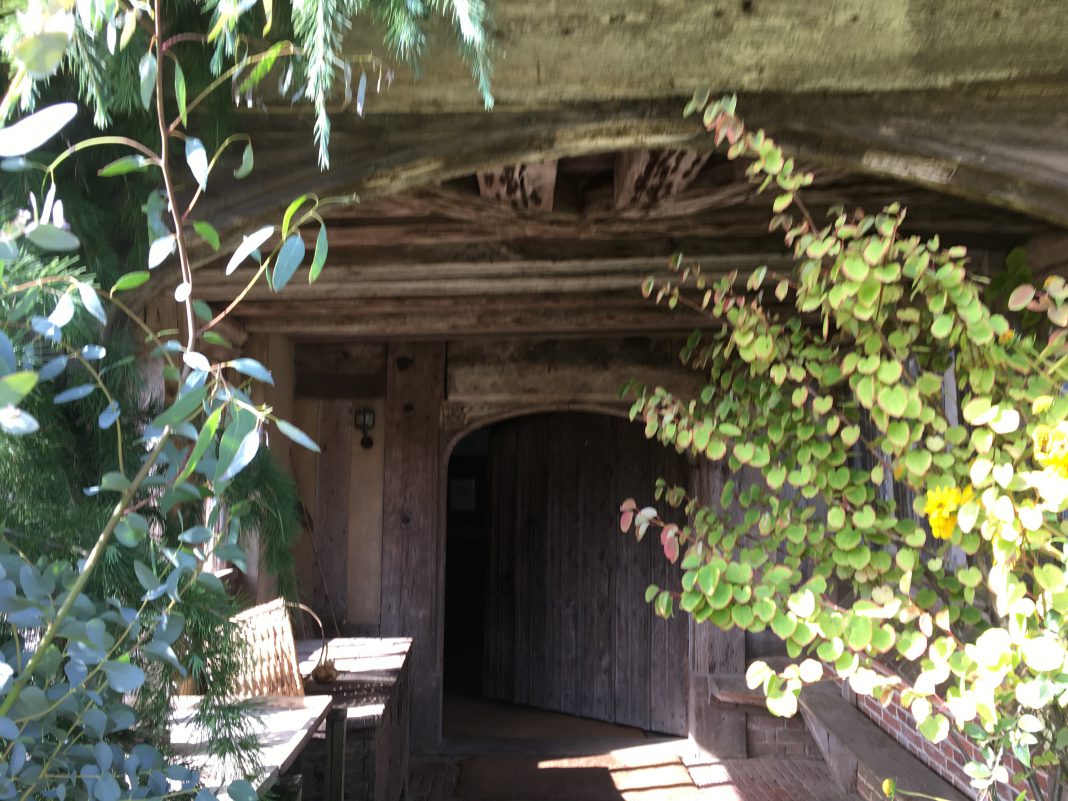Great Dixter House and Garden in Northiam is now best known for its magnificent gardens and, to a lesser extent, the house. Purchased by Nathaniel and Daisy Lloyd in 1910, the famous gardener and writer Christopher Lloyd was one of their six children, and had his home here all his life, with forays to study at school and university and to do his war service. The gardens that his parents and Sir Edwin Lutyens, their architect, laid out and which Christopher Lloyd developed, replanted and refreshed lie all round the house, with nineteen differently named ‘gardens’ each with its own special planting and spirit of place.
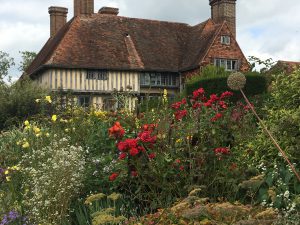
When the dilapidated mediaeval house and grounds, then called just ‘Dixter’ were bought to make a gentleman’s estate and family home for the Lloyds, there were no gardens at all here, just a farmyard and buildings. It is not possible to write about all the different gardens, so two have been chosen, with brief mention of a third, because the guides in the open part of the house often get asked about them. First, cats and dogs!
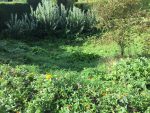
Of these, enquiries are often made as to the whereabouts of the cats in the “cat garden”, but the garden was never about cats. It is, according to the website, “a damp meadow, containing marginals amongst vigorous perennials”. It was the place where the kitchen cats lived, good mousers all. It sadly no longer has cats, who prefer the Nursery and the fields at the bottom of the garden. There is a kiosk cat carefully tended by the kiosk staff, but the others drift about at the bottom of the site, as cats do. You will be lucky to catch a glimpse, unless sitting on the Lutyens bench facing the topiary garden, when a bold one may land unexpectedly (and possibly unwelcome) on your knee.
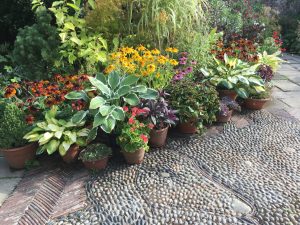
If you look in the Wall Garden, you will however find a pebble mosaic of Christopher Lloyd’s two dachshunds, Dahlia and Canna. The mosaic replaced the rectangular lawn in 1998 and it has a superb pot display at the moment. There are still two living dachshunds bustling about, called Conifer and Miscanthus.
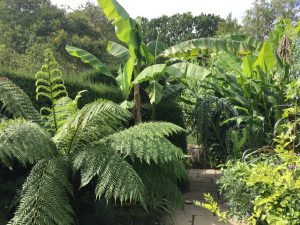
Secondly, the Exotic Garden, the place where Sir Edwin Lutyens designed a formal rose garden. If you walk through the “hovel”, actually an old cowshed on the site of a one-time cattle yard at the back of the Topiary Garden, you will see, to quote Christopher Lloyd “thanks to replant disease, newly planted rose replacements ceased to thrive here”. So in 1992, he and Fergus Garrett, who had just been appointed the head gardener, got rid of the roses and “created a late summer to autumn garden for tropical effect”. Each year, it is looked at and this year (2018), it has been given a particularly thorough refresh. The pictures, taken this week, show it in all its abundance.
The strong infrastructure of the buildings, hedges, which take months to trim, trees and wildflower meadows, cut twice a year, are, according to Fergus Garrett, “managed in the same way as in Christopher Lloyd’s time”. Most of the actual design was by Lutyens, and nowadays this infrastructure supports “high impact planting and intimacy in our combinations”.
Great Dixter Gardens are open March 30 to October 28, Tuesday to Sunday. Open Bank Holiday Mondays. Gardens: 11am to 5pm (last admission), House: 2pm to 5pm only.
Great Dixter Nurseries are open all year round. Check the website for details.
Image Credits: Gillian Roder .



